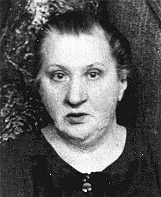You searched for: 批发产品投资理财源码快速搭建【TG电报:@EK7676】平台包网搭建批发产品投资理财源码快速搭建【TG电报:@EK7676】平台包网搭建41Q4ezCiLa
<< Previous | Displaying results 1-25 of 57 for "批发产品投资理财源码快速搭建【TG电报:@EK7676】平台包网搭建批发产品投资理财源码快速搭建【TG电报:@EK7676】平台包网搭建41Q4ezCiLa" | Next >>
-
Immigration to the United States 1933–41
ArticlePotential immigrants to the US from Nazi-occupied territory faced many obstacles, including restrictive quotas and complicated requirements for obtaining visas.
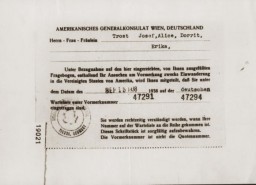
-
The United States and the Refugee Crisis, 1938–41
ArticleNazi Germany’s territorial expansion and the radicalization of Nazi anti-Jewish policies triggered a mass exodus. Learn about the US and the refugee crisis of 1938–41.
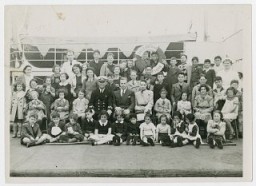
-
Polish Jewish Refugees in Lithuania: Unexpected Rescue, 1940–41
ArticleLearn more about the efforts of L.P.J. de Decker, Jan Zwartendijk, and Chiune Sugihara to help Polish Jewish refugees escape Lithuania during the war.
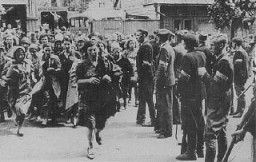
-
Samuel Soltz's Visa
Timeline EventAugust 21, 1940. On this date, Samuel Soltz's visa was stamped by Chiune Sugihara, the Japanese consul to Lithuania.
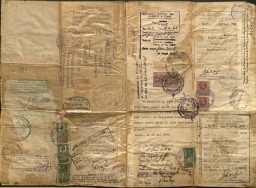
-
Antisemitic isolationist publication
PhotoAn antisemitic isolationist publication in the United States, ca. 1938–41. It blames Jews and Jewish interests for the war and advocates the boycott of Jewish businesses.

-
Roll call at Buchenwald
PhotoPrisoners during a roll call at the Buchenwald concentration camp. Their uniforms bear classifying triangular badges and identification numbers. Buchenwald, Germany, 1938–41.

-
Internment camp for Roma (Gypsies)
PhotoRoll call at an internment camp for Roma (Gypsies). Lackenbach, Austria, 1940–41.
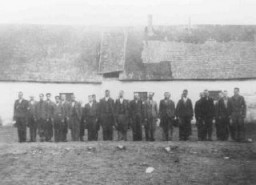
-
Cover of Elizabeth Kaufmann's diary
PhotoThe cover of a diary written by Elizabeth Kaufmann while living with the family of Pastor André Trocmé in Le Chambon-sur-Lignon. Le Chambon-sur-Lignon, France, 1940–41.

-
Wall separating the Warsaw ghetto from the rest of the city
PhotoPolish civilians walk by a section of the wall that separated the Warsaw ghetto from the rest of the city. Warsaw, Poland, 1940–41.
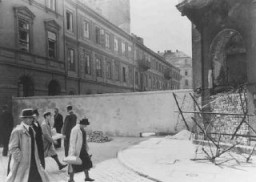
-
Samuel Soltz's visa
DocumentThe back of Samuel Soltz's citizenship papers illustrates the vast array of bureaucratic stamps and visas needed to emigrate from Europe in 1940–41. The stamp in the top left, dated August 21, 1940, represents a visa from the Japanese consul to Lithuania, Chiune Sugihara. Sugihara issued thousands of visas to enable Jews to escape.

-
Page from Elizabeth Kaufmann's diary
PhotoPage from a diary written by Elizabeth Kaufmann while living with the family of Pastor André Trocmé in Le Chambon-sur-Lignon. Le Chambon-sur-Lignon, France, 1940–41.
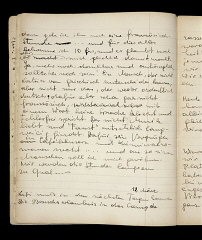
-
Antisemitic propaganda in the United States
PhotoAntisemitic propaganda in the United States that presents President Franklin D. Roosevelt's declaration of a state of unlimited national emergency as the product of an international Jewish conspiracy to save world Jewry and to bring destruction upon America. United States, ca. 1938–41. Among the antisemitic declarations on the caricature are: "Jews Are The Cause of High Taxes - Slavery - Starvation and Death ---" "How long will the American people continue to tolerate this…
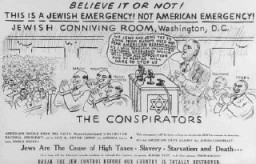
-
Gurs
ArticleIn 1939, the French government established the Gurs camp. Learn more about the history of the camp before and after the German invasion of France.
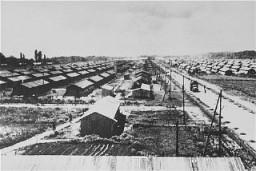
-
Theresienstadt: "Retirement Settlement" for German and Austrian Jews
ArticleIn 1942, German authorities began to deport German and Austrian Jews to Theresienstadt. Learn about the administration of the camp-ghetto and Jews’ experiences.

-
Flory (Floritza) Jagoda describes anti-Jewish measures following the occupation of Zagreb
Oral HistoryFlory was born into a Sephardic Jewish family. When Flory was a young girl, her mother moved to Zagreb with Flory's stepfather; Flory joined them after living with her grandmother for two years. In Zagreb, Flory took music lessons and learned how to play the accordion. Germany and its allies invaded Yugoslavia in April 1941, partitioning the country and establishing a fascist regime under the Ustase (pro-German Croatian nationalists) in Croatia. The Ustasa regime soon imposed anti-Jewish regulations in…
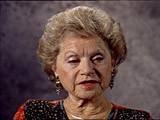
-
Ezra Zelig Szabasson
ID CardEzra Zelig, who was called Zelig by family and friends, worked in the lumber business in Kozienice, a village by the Kozienice birch forest. He was married and the father of six children. A prominent member of the community, Zelig served on Kozienice's city council, and was also president of the local Zionist organization. 1933-39: In 1937 Zelig tried to obtain visas for his family to immigrate to Palestine [the Yishuv], at that time a British protectorate, but was unsuccessful because of the…

-
Mordecai Pinchas Szabasson
ID CardMordecai, known in Yiddish as Motl, was born to a religious Jewish family with six children. His hometown of Kozienice, located near a birch forest, had an important lumber industry. After graduating from secondary school, Mordecai entered the lumber business. His small, successful company bought and sold lumber. 1933-39: A few months after the Germans invaded Poland in September 1939, Mordecai's father was warned to leave because, as a prominent member of the community, it was likely that the Germans…
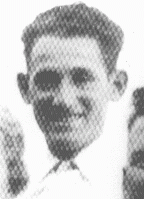
-
Cedomir Milan Sorak
ID CardCedomir was the oldest of five children born to Serbian Orthodox parents. The Soraks lived in the multi-ethnic city of Sarajevo, the capital of the region of Bosnia. Cedomir's father, Milan, was an engineer employed by the Yugoslav state railways, and his Hungarian-born mother, Andjelija, was a housewife. 1933-39: The Sorak family moved to Zagreb after Cedomir's father was promoted to the position of assistant director of the rail system in the region of Croatia. He graduated from secondary school in 1938…
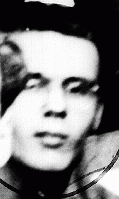
-
Robert Oelbermann
ID CardIn 1919 Robert and his brother Karl founded the Nerother Bund youth group in the Cologne region. Like other German youth groups, it aimed to bring youth closer to nature through camping and hiking. Homosexual relationships sometimes developed from the intense adolescent male camaraderie, and the Nerother Bund accepted these friendships, as did a number of German youth groups at the time. 1933-39: Soon after the Nazis took power in 1933, they dissolved all independent youth groups and urged the members to…
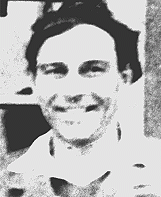
-
Benjamin Soep
ID CardBenjamin, called "Benno" by his family and friends, grew up in a religious Jewish household in Amsterdam. Benno's father, a successful diamond manufacturer, was president of the Amsterdam Jewish community. Benno had two younger sisters and enjoyed collecting stamps. 1933-39: After he obtained some work experience in a department store, Benno joined his father in the diamond business. Benno adhered strictly to Jewish law. He loved tennis and skiing, and in 1938, while skiing in Switzerland, he met a girl…
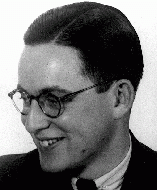
-
Jacob Gamper
ID CardJacob was born to a Jewish family in the Baltic seaport of Liepaja. He owned a clothing store in the city, and also owned some apartments, from which he collected rent. After his wife died, Jacob, who had retired, moved in with his daughter Sarah. 1933-39: Jacob was an avid reader. His favorite newspaper was Liepaja's German language daily, the Libauer Zeitung, which he liked to read in the garden and orchard around his daughter's home. On Sundays, "Grampa" would take his granddaughters Fanny and Jenny…
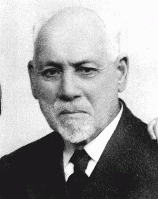
-
Herman Judelowitz
ID CardHerman was the oldest of nine children born to a Jewish family in the Latvian village of Aizpute. He was a World War I veteran, and after the conflict, in 1918, he fought for the establishment of a free Latvian republic. Two years later he married Sarah Gamper and they settled in the city of Liepaja, where they owned a shoe store. By the late 1920s they had two daughters, Fanny and Jenny. 1933-39: Herman designed patterns for the uppers of shoes, which he used to fashion into finished shoes. His shoe…
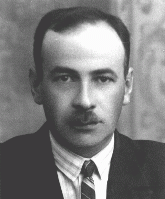
-
Bella Judelowitz
ID CardBella, born Bella Hirschorn, was raised in a Jewish family in the Latvian town of Kuldiga. When she was a young woman, Bella moved to the small town of Aizpute, where she met and married Daniel Judelowitz. Together they opened a bakery-grocery in the town. In the 1920s they moved to Liepaja and opened a dry goods store. The couple had 10 children, one of whom died in infancy. 1933-39: The Judelowitzes' store sold fabric and various clothing items and accessories from buttons to shirts and stockings. After…
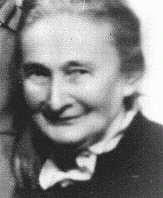
-
Daniel Judelowitz
ID CardDaniel was born to a Jewish family in the Latvian town of Aizpute. There, Daniel met and married Bella Hirschorn and together they opened a bakery-grocery in the town. In the 1920s they moved to Liepaja, on the Baltic coast, and opened a dry-goods store. The couple had 10 children, one of whom died in infancy. 1933-39: The Judelowitzes' store sold fabric, accessories and various clothing items from buttons to shirts and stockings. After Daniel and Bella retired, their daughters took over the business. In…
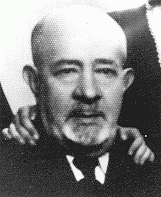
-
Rachel Lea Galperin
ID CardRachel, born Rachel Karpus, was born to a Jewish family in the northeastern Polish city of Vilna. At the age of 16, Rachel married Reuven Galperin, a typesetter for a Jewish newspaper in the city, and the couple subsequently had 16 children. Only nine of the children lived to the 1930s. 1933-39: In addition to caring for her children, Rachel also operated a small grocery on Nowigorod Street. In 1938 Rachel's husband died. One year later, on September 1, 1939, Germany invaded Poland and 17 days after that…
